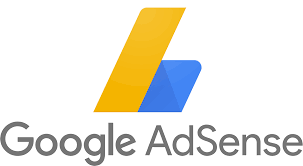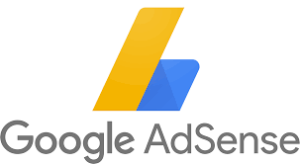
The Ultimate Guide to Google AdSense
Maximize Your Website’s Revenue
In today’s digital landscape, monetizing websites and blogs has become a primary focus for content creators and businesses alike. Google AdSense stands as one of the most popular and accessible ways to earn revenue through online content. With its straightforward setup and vast network of advertisers, AdSense has empowered millions to generate income by simply hosting ads on their sites. This guide will walk you through everything you need to know about AdSense—from what it is, how it works, to the most effective strategies for increasing your AdSense revenue.
What is Google AdSense?
Google AdSense is an advertising platform that allows website owners and publishers to monetize their content by displaying ads from Google’s vast network of advertisers. It operates on a cost-per-click (CPC) and cost-per-impression (CPM) model, where publishers earn revenue based on the number of ad clicks or impressions they receive.
How Does Google AdSense Work?
Google AdSense is built on a simple but effective model:
- Advertisers create ads and set budgets via Google Ads.
- Google selects ads relevant to the content and visitors of each participating website.
- Publishers (website owners) earn revenue when visitors click on or view these ads.
When a user visits a website that’s part of the AdSense program, they’ll see ads related to the website’s content or based on their own browsing history. Google automatically handles ad placement, matching, and payments, making it a popular choice for both new and experienced publishers.
Why Choose AdSense?
There are several reasons why AdSense remains a leading choice for website monetization:
- Ease of Use: AdSense is straightforward to set up, making it accessible for beginners.
- Vast Network: With millions of advertisers, Google ensures relevant and high-quality ads for nearly any niche.
- Automated Ad Matching: AdSense automatically analyzes your site’s content and places ads that match your audience’s interests.
- Reliable Payments: Google has a solid reputation for on-time payments, offering various payout methods.
- Customizable Ad Formats: AdSense offers a range of ad formats, so you can choose what best fits your site’s design.
Getting Started with Google AdSense
1. Meet the Eligibility Requirements
Before applying, ensure your website meets AdSense’s eligibility criteria:
- High-Quality Content: Your site must have original, valuable content with no plagiarized or duplicated material.
- Site Ownership: You must own the website and have control over its code.
- Traffic Sources: Avoid traffic from illegal sources or bots; Google prefers organic or reputable referral traffic.
- User-Friendly Design: Ensure your site has an easy-to-navigate structure, as a positive user experience improves ad performance.
2. Create an AdSense Account
Once you meet the eligibility requirements, you can sign up for an AdSense account. Here’s how:
- Visit the AdSense website and click on “Get Started.”
- Submit your website’s URL and contact information.
- Verify your website by adding a small piece of code to your site’s HTML.
- Wait for approval: Google will review your site and respond within a few days.
3. Set Up and Customize Ad Units
Once your AdSense account is approved, you can start creating ad units. Ad units are the individual ads displayed on your website, which come in different sizes and formats, including:
- Text Ads: Show clickable text links.
- Image Ads: Visual banners that capture attention.
- Responsive Ads: Automatically adjust to fit different screen sizes.
- In-Article Ads: Blend naturally within your content to improve engagement.
- In-Feed Ads: Appear within your feed, ideal for blogs or e-commerce sites with item listings.
Choosing the right format and placement is crucial to maximizing revenue, as different formats perform better on specific sections of a website.
Tips for Maximizing Your AdSense Revenue
Getting approved for AdSense is only the first step. To truly benefit from the program, you’ll need strategies to optimize ad placement, increase clicks, and boost overall earnings. Here are some tips:
1. Prioritize Ad Placement
Effective ad placement can make a significant difference in click-through rates. Research shows that ads placed “above the fold” (the section visible without scrolling) generally perform better. Consider these high-visibility placements:
- Within Content: Ads placed within the main body of content often receive more attention.
- Header and Footer: Placing ads in the header and footer can increase exposure without disrupting user experience.
- Sidebar: Sidebars are prime spots, especially for image and responsive ads.
2. Choose High-Performing Ad Sizes
AdSense provides different ad sizes, but some consistently perform better. The best-performing sizes include:
- 300×250 Medium Rectangle: Often fits within content and grabs user attention.
- 336×280 Large Rectangle: Provides a bigger canvas and works well in sidebars.
- 728×90 Leaderboard: A horizontal ad ideal for headers and footers.
- 300×600 Half Page: This larger format can boost engagement when placed next to high-quality content.
3. Experiment with Auto Ads
Auto Ads is an AdSense feature that automatically places ads on your site for optimized revenue. Google uses machine learning to determine the best placements, formats, and sizes. While Auto Ads can take control away from the publisher, many users report higher earnings due to Google’s advanced algorithms.
4. Improve Your Site’s Speed and User Experience
Page speed and user experience are crucial for maximizing AdSense revenue. Here’s how they impact performance:
- Fast Loading Times: Google prioritizes fast websites in search rankings, so a slow site can hurt traffic.
- Mobile Optimization: With more users accessing the web via mobile, a mobile-friendly design is essential for maximizing clicks.
- Clear Navigation: A clean, easy-to-navigate design helps users stay engaged, leading to higher ad impressions.
5. Focus on High-Quality Content
High-quality content increases page views, time spent on your site, and user engagement. Aim to create content that is:
- Relevant and Useful: Answer your audience’s questions and provide actionable insights.
- Regularly Updated: Fresh content attracts more users and can improve your AdSense performance.
- Keyword Optimized: Use SEO to target keywords that bring in organic traffic, leading to more ad impressions.
Tracking and Analyzing AdSense Performance
Monitoring your AdSense performance is essential for maximizing earnings. Google AdSense provides a robust dashboard where you can track metrics like page views, click-through rates, and estimated earnings.
Key Metrics to Monitor
- Page Views: The number of times your pages are viewed. Higher page views mean more ad impressions.
- Click-Through Rate (CTR): Percentage of users who click on your ads. A higher CTR usually translates to higher earnings.
- Cost Per Click (CPC): How much you earn per click. CPC varies based on the niche, ad type, and advertiser competition.
- Estimated Earnings: Your total estimated revenue for a given period. This gives you an overview of your potential monthly or annual income.
Common AdSense Mistakes to Avoid
While AdSense can be a powerful revenue source, common mistakes can limit your earnings or even lead to account suspension. Here are some to avoid:
- Click Fraud: Never click on your own ads or ask others to do so. Google’s algorithms can detect fraud, and violations may result in suspension.
- Excessive Ads: Overloading your website with ads can lead to a poor user experience and reduced SEO rankings.
- Violating AdSense Policies: Follow AdSense’s content guidelines carefully. Content that’s prohibited (e.g., adult content, gambling) can lead to penalties.
- Poor Content Quality: Thin, duplicate, or low-quality content can result in low ad impressions and poor revenue.
Alternatives to Google AdSense
While AdSense is a great starting point, some publishers explore alternatives to diversify income streams. Here are a few options:
- Media.net: A contextual ad network similar to AdSense, particularly popular in the U.S.
- Amazon Associates: Earn commissions by promoting Amazon products.
- Ezoic and Mediavine: Premium ad networks that offer higher CPM rates for publishers with established traffic.
Conclusion: Making the Most of Google AdSense
Google AdSense offers website owners a straightforward way to earn money from their content. With the right strategies—optimized ad placement, high-quality content, and user-friendly design—publishers can maximize their AdSense revenue effectively. Regularly analyzing performance, adhering to best practices, and avoiding common mistakes are essential to long-term success.
If you’re ready to turn your website into a revenue-generating platform, AdSense could be the perfect solution. Start optimizing today, track your metrics closely, and continually adapt to see your earnings grow over time.

Can You Live Solely on AdSense?
Many people wonder if it’s possible to make a living entirely from Google AdSense. The

Common AdSense Mistakes That Lower Your Earnings and How to Avoid Them
Common AdSense Mistakes That Lower Your Earnings and How to Avoid Them Are your AdSense

The Ultimate Guide to Google AdSense: Maximize Your Website’s Revenue
The Ultimate Guide to Google AdSense Maximize Your Website’s Revenue In today’s digital landscape, monetizing

The Ultimate Guide to Digital Marketing Essentials: Key Strategies for Success
The Ultimate Guide to Digital Marketing Essentials Key Strategies for Success In today’s fast-paced world,

The Role of AI in Image Creation: Revolutionizing Digital Art and Design
The Role of AI in Image Creation Revolutionizing Digital Art and Design In recent years,

The Growing Adoption of AI Virtual Assistants in 2024: How to Integrate Them into Your Business
The Growing Adoption of AI Virtual Assistants in 2024 How to Integrate Them into Your